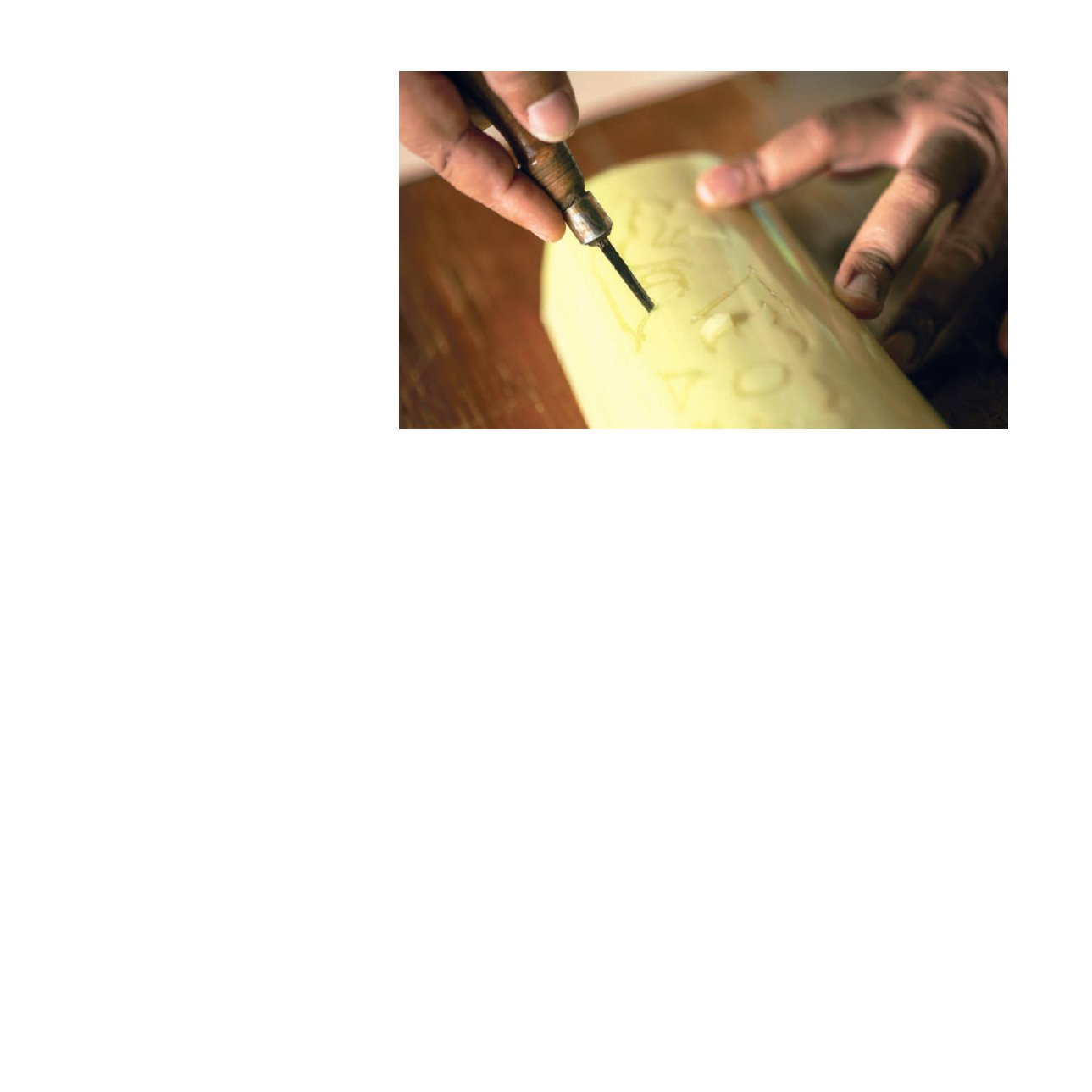

Science and Art Thai Craftsmanship
|
127
Banana Stalk Carving
Craftsmanship
The Craftwork on Banana Trunks
Large banana stalks is cut fresh from the trunk, peeled into thin pieces. A double-edged
knife is further used to carve Thai patterns without prior drafts. To avoid bruising the stalks, only
master craftsmen can make finely elaborated carvings for decorations in both blessing and funeral
ceremonies.
Banana stalk carving belongs to carving branch in the school of fresh material craftsmanship,
together with the soft material carvings and the fresh flower arrangements. It is a fine art of using 2-5
inches long double-edged knives to plunge into banana stalks and to carve Thai motifs in various
designs. A good craftsman must have expertise in Thai patterns and pattern elaborations because
it is unmistakable once the knife is plunged into the banana stalks. The carver must be accurate
and smoothly drag lines to create patterns. Otherwise, the banana stalks will be spoilt. This kind of
work also require the craftsman to run against the time. That is, a carver must prepare and carve
the stalks within 10-12 hours before using it, in order to keep the work fresh and beautiful during
the time of the event.
The importance of banana stalk carvings is the application to decorate rituals according
to local beliefs. They can be used in the sacred ceremonies, such as tonsure, Thetmahachat
sermons, and in decorations of monk’s seats, palanquin of new monks, and the funeral pyre.
“
Banana stalk carving
craftsmanship is a knowledge
transferred from generation
to generation and the
beauty of using natural
and easy-to-find local
materials to create a fine
work. It also reflects the
culture related to death and
Buddhism which is inherited
from ancient times.
”


















